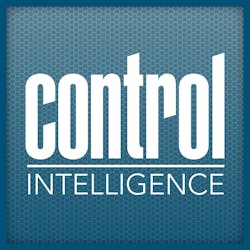In this episode of Control Intelligence, written by contributing editor Tobey Strauch, editor-in-chief Mike Bacidore discusses the future of PLCs in machinery used in a modular, connected factory or plant.
Transcript
Modularity is a popular term today in automation and machine building. How can you apply modularity to your design? If a machine is broken up into systems, not just on functionality but on resource, then it may be seen a little more easily.
What do control systems have? Power, pneumatics, motion, communications, alarms, MES feedback and SCADA setup, for example.
What if we picture not just the functionality of the line broken into systems and subsystems, but the support of the line—can you modularize utilities? Do you have premade code that you can use for monitoring and controlling power or air or water?
Then we modularize the functionality—some kind of prep work to the material, do something to the material and then output the material. The idea of using open programmable logic controllers (PLCs) and creating applications for these things rings loud. Why? If you handle utilities the same way for every machine build, then you may have templated code and a templated hardware configuration.
Take it one step forward as an input to an application. This would be the advantage of C/C++ or the like. As a system, controls involve sensor, controller and actuator. Think of these as symbolic terms:
- sensor, or inputs, are field devices and feedback of some kind of measurement
- the controller converts signals from the field and decides on an outcome
- an actuator, the outputs, symbolizes the output side and motion. For discrete systems this is linear or rotary motion. For process control, motion is still involved in motor/pump control or actuation of valves.
Substituting the plant for the controller allows the plant to be seen as a system itself. Then everything inside the plant is a subsystem to the plant. This means, from a data perspective, the sky is the limit for applications.
Let’s take a different look. Remember in the 1960s, when there were hundreds of relays they wanted to put into a box and make it easier, smarter, simpler? The same thing is occurring now with the push for edge computing, Industrial Internet of Things (IIoT) and Industry 4.0. The difference is that manufacturers have hundreds of data silos, and the drive is to apply artificial intelligence and machine learning, instead of computers.
This push will change the PLC and the way that we look at PLC-oriented control systems. Eventually, the PLC will become a smaller entity as instrumentation is controlled by computers remotely. Unified namespace applied technology fits with systems-oriented ideas and being able to repeat subsystems in the system and to document additions of hardware in the system as they are added.
This is the drive behind the Clean Energy Smart Manufacturing Innovation Institute (CESMII), which is working to tie data silos together in manufacturing and progress Industry 4.0 initiatives to enhance the digital transformation.
This way of thinking has been dubbed “smart factory.” The current roadblocks with the smart factory are high initial investment, cybersecurity risks, organizational complexity, skilled personnel and competition for resources. There is not an application for it. The solution is long-term and will only be successful for turning manufacturing, if there are long-term commitments to embracing and maintaining new technology.
About the Author

Control Intelligence
A Control Design Podcast
Control Intelligence is a Control Design podcast that goes deep inside the automation and technology that machine builders, system integrators and end users rely on to keep production humming efficiently. New episodes come out every Monday, and download all episodes by Apple Podcasts or Podbean.

Leaders relevant to this article:
